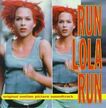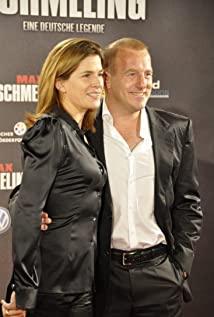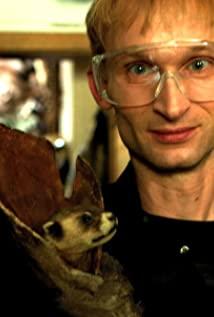A common opinion is to praise the unique plate-type narrative structure in "Lola Run": "It is believed that this film opens up a new prototype of future film narratives". However, it begs the question, how exactly is this done?
In my opinion, the story of "Lola Run" is actually quite simple, even rough: in order to collect 100,000 marks in 20 minutes to rescue her boyfriend, Lola had to adopt various strategies; This strategy brings us three very different endings.
In fact, it's not so much an orchestrated story as a "meaningful combination" of a simple story and its derivatives. At this point, another narrative model can be compared: the "network structure of life", the outstanding representatives of which are Quentin's sophisticated and interesting Pulp Fiction and Wong Kar-wai's casual but unique style of "Chongqing Forest". It is worth noting that "Lola Run" is essentially different from the first two in terms of narrative: the entire movie can be said to be just a different version of a story, rather than a logical combination of different stories.
At this point, I think it's an exaggeration to praise this film for its enormous contribution to the film's narrative (of course, judging from its impact on subsequent films, it seems to have verified this). The core of the problem is not really there. In fact, I do not deny the brilliant narrative strategy of this film, but it should be noted that this brilliant effect is brought about by the narrative method itself? Or is it just that it has found a "content" that goes well with it?
In a sense, a great film is the perfect combination of a good form of expression and its appropriate content. At this point, I think it may be more meaningful to discuss the interaction between the "fast-moving" narrative structure and its narrative content in "Lola Run". It should be admitted that the film is claimed to be the representative work of the "new century", with an obvious postmodernist style. One of the things that intrigues me the most is the way the film is "deconstructed". Postmodernists firmly believe that "there is no unified belief", they reject all exclusionism and universalism, give voice to as many ideas as possible, promote deconstructed creeds, and implement meaningless norms.
But how does this belief work for film? I thought the film provided an idea for that.
Eisenstein's montage theory points out that the way in which the meaning of a film is produced lies in the compositional relationship between shots and in the overall arrangement of the whole film form. Using this theory may better help to explain the film's meaning-making mechanism. As mentioned earlier, this film adopts a narrative mode similar to "A--A'---A''", perhaps this can be compared with the theme variation in music: both are the art of time, even if they are the same The material can also make the audience's psychology "illusion" in the passage of time. Under the magic of memory and comparison, the audience automatically accepts the meaning generation system; Parts will automatically acquire the additional attribute of so-called "meaning" (even if the director himself did not expect it). Of course, it is obvious that the director did use a lot of unique elements in this film. For example, the protagonist's special function of screaming is obviously derived from the famous German novel "The Tin Drum" and its adaptation. (It is worth noting that the little Oscar in "The Tin Drum" itself has unique symbolic meanings, such as his identity issues), and the shot of the purse thrown up and down in the passage is closely related to "Goodbye Lenin" and "2001 Space". Roaming also has many similarities. In short, this overall "repetition" rather than "contrast" narrative mode creates a more active way of creating meaning for the audience, forming the effect of 1+1+1>3.
And what does this have to do with deconstruction? I would like to point out that the construction and deconstruction of meaning is logically a sequential relationship. Most of the conventional deconstruction methods just place them in places where the meaning cannot function or are distorted based on the existing meaning symbols in the past, so as to achieve the goal of dissolving the inherent meaning. At this point, the pursuit of "dissolving meaning" is exactly what it means.
Its inherent contradiction is highlighted: in this case, deconstruction is often mistaken for subversion, which inherently negates its own "meaningless" premise.
In this film, the generation of meaning takes a back seat. The director has no intention of creating a system of meaning for us. As the audience feels, the acquisition of a sense of entertainment comes first. The meaning here realizes the double exit from the director to the audience: everything serves the sense of play. Here, the construction of meaning and deconstruction have a real equal status—they become the background of the game, not the goal of the film.
It is under this design that a very entertaining story form is needed to make the film attractive, or rather, in order to find the most suitable design for a very entertaining story form, the director makes such a narrative strategy. And this video game-style story model has indeed achieved its goal, and it can even be said that the film is the isomorphism of video games.
In this sense, the film can be considered as an adaptation of the "video game" format. As Bazin said in the article about Bresson's "Diary of a Country Priest", in order to realize the novelization of the film, Bresson made a conflict and opposition between the sound element and the picture, forming a novelized film writing. By separating the meaning generation mechanism from the story itself, this film highlights the entertainment sense of the story itself and realizes a "video game-like" film style.
View more about Run Lola Run reviews











